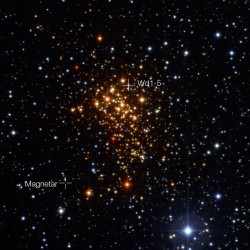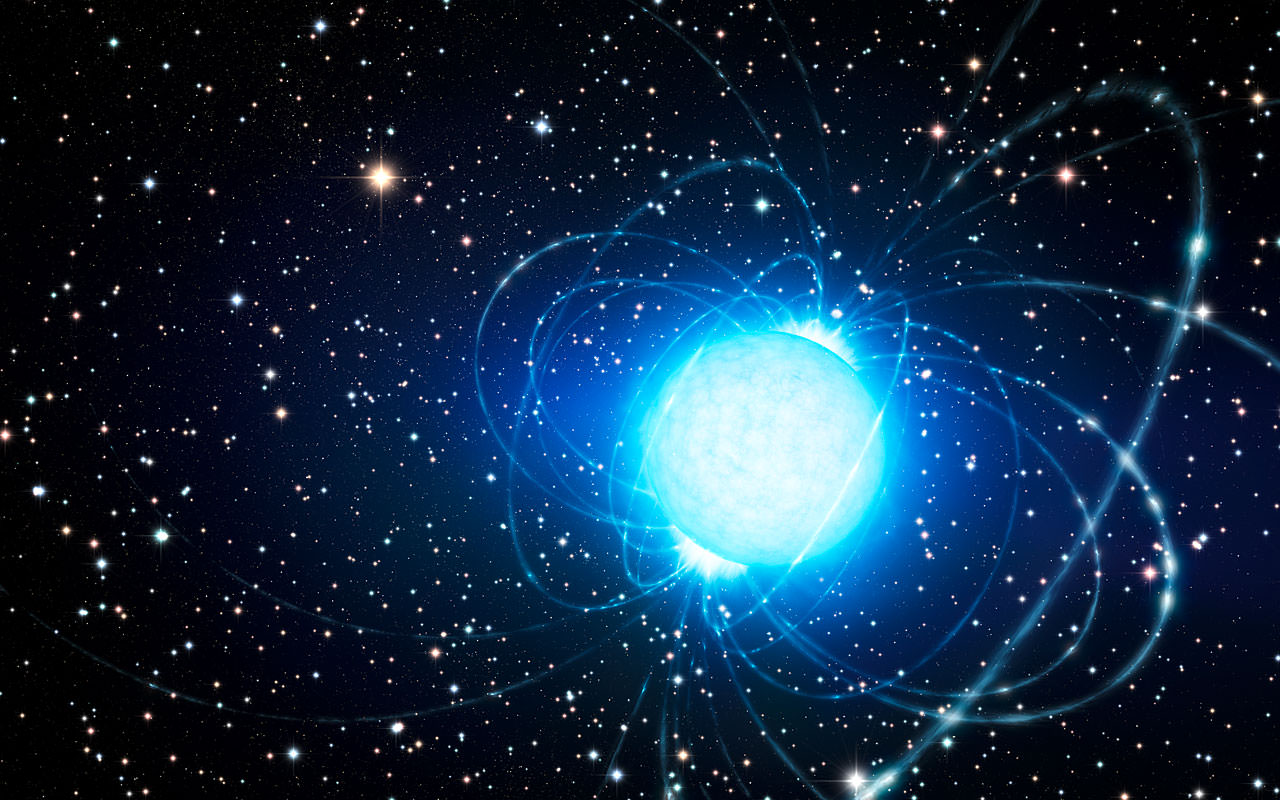Astronomy is a discipline of extremes. We’re constantly searching for the most powerful, the most explosive, and the most energetic objects in the Universe. Magnetars — extremely dense and highly magnetic neutron stars — are no exception to the rule. They’re the strongest known magnets in the Universe, millions of times more powerful than the strongest magnets on Earth.
But their origin has eluded astronomers for 35 years. Now, an international team of astronomers think they’ve found the partner star of a magnetar for the first time, an observation that suggests magnetars form in binary star systems.
When the core of a massive star runs out of energy, it collapses to form an incredibly dense neutron star or black hole. Meanwhile the outer layers of the star blow away in a stupendously powerful explosion, known as a supernova. A teaspoon of “neutron star stuff” would have a mass of about a billion tonnes, and a few cups would outweigh Mount Everest.
Magnetars are an unusual form of neutron stars with powerful magnetic fields. While there are roughly a dozen known magnetars in the Milky Way, one stands out as being the most peculiar. CXOU J164710.2-455216 — located 16,000 light-years away in the young star cluster Westerlund 1 — is unlike any other magnetar because astronomers can’t see how it formed in the first place.
Astronomers estimate that this magnetar must have been born in the explosive death of a star about 40 times the mass of the Sun. “But this presents its own problem, since stars this massive are expected to collapse to form black holes after their deaths, not neutron stars,” said Simon Clark, lead author on the paper, in a press release. “We did not understand how it could have become a magnetar.”
So astronomers went back to the drawing board. The most promising solution suggested that the magnetar formed through the interactions of two massive stars orbiting one another. Once the more massive star began to run out of fuel, it transferred mass to the less massive companion, causing it to rotate more and more rapidly — a crucial ingredient to creating ultra-strong magnetic fields.
In turn, the companion star became so massive that it shed a large amount of its recently gained mass. This caused it “to shrink to low enough levels that a magnetar was born instead of a black hole — a game of stellar pass-the-parcel with cosmic consequences” said coauthor Francisco Najarro from the Centro de Astrobiología in Spain.

There was only one slight problem: no companion star had been found. So Clark and colleagues set out to search for a star in other parts of the cluster. They used ESO’s Very Large Telescope to hunt for a hypervelocity star — an object escaping the cluster at an incredible speed — that might have been kicked out of orbit by the supernova explosion that formed the magnetar.
One star, known as Westerlund 1-5, matched their prediction.
“Not only does this star have the high velocity expected if it is recoiling from a supernova explosion, but the combination of its low mass, high luminosity and carbon-rich composition appear impossible to replicate in a single star — a smoking gun that shows it must have originally formed with a binary companion,” said coauthor Ben Ritchie from Open University.
The discovery suggests that double star systems may be essential for forming these enigmatic stars.
The paper has been published in Astronomy & Astrophysics, and is available for download here.


CXOU J164710.2-455216…that name has a nice ring to it. Simple yet elegant, it just rolls off the tongue.
In the picture showing locations of the magnetar and it’s former companion, I assume the magnetar is too small/not bright enough to see in the image?